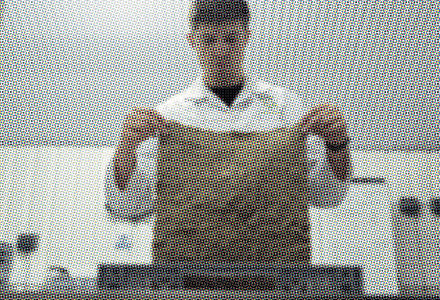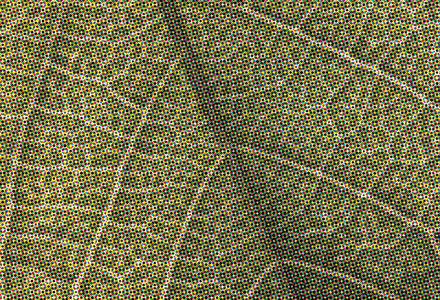Bio-based polymers, between ecological wonder and industrial reality The - Denim Première Vision - Première Vision New York - Première Vision Paris

In an effort to propose alternatives to fossil-based plastics, biotech startups are cultivating cell cultures of biopolymers – macromolecules made from biomass, in other words from the decomposition of living organisms. This is also true of the textile industry, where most of the offer currently consists of conventional polyester. Today, we are seeing the promising emergence of new fibers being industrialized, whose cultivation helps absorb carbon dioxide, whose transformation is less energy-consuming and environmentally destructive, and which are biodegradable at their end of life cycle. Here, we define and take stock of the current offer of biopolymers in the textile world.

What is a biopolymer?
Biopolymers, or bio-based polymers, are polymers derived exclusively from living organisms or from polymers synthesized from renewable resources. They are different from synthetic polymers (of fossil origin) and from biodegradable polymers, which are polymers of fossil origin enhanced by additives to promote their degradability.
Biopolymers are derived from biomass. There are three kinds:
– Biopolymers derived from plants (agar-agar, sodium alginate, starch…), algae or animals (collagen, casein, etc.)
– Biopolymers produced by chemical polymerization: this family is essentially made up of PLA (polylactic acid).
– Biopolymers produced by genetically modified microorganisms (PHA, PHV, PHBV).
They can be naturally present in the form of polymers or obtained by the polymerization of monomers. They can be mixed with traditional fossil polymers, which is what is proposed by so-called “responsible chemistry” – for example with mixed polyesters composed of recycled and partially bio-sourced materials (such is the case at Frumat© for example.https://marketplace.premierevision.com/en/frumat-3841.html ).
“Green chemistry” prefers to combine other 100%-natural components from biomass. For example: a blend of cactus polymers and a natural coating is being developed by Desserto© to help develop a 100% biodegradable leather-alternative textile.
How are biopolymers ecological?
Biodegradable materials
The extraction of fossil resources, their rarefaction, the energy intensiveness of their transformation and their poor recyclability (see the article on the recycling of polyester) are all arguments that we don’t need, in 2021, to keep rolling out in order to explain how urgently we need to rid ourselves from them. Biopolymers were first presented as an alternative to petrochemical packaging waste, which still represents two thirds of what is in our trash cans. The same is true for textile materials: alongside recycling, which is of only limited ecological interest, it seems interesting to favor biodegradable materials. Biodegradability indicates the ability of a material to be entirely assimilated in a specific environment (a combination of luminosity/temperature/time scale parameters) by the micro-organisms present, which feed on its components to draw the energy needed for their own survival. Biopolymers thus contribute to the regeneration of natural resources and as such, are considered renewable

A virtuous culture
In addition, biopolymer cultures are often created in a biological environment in order to avoid any contamination of materials. The plants at the origin of these materials are also efficient in capturing CO2 or filtering micro-particles. This is true of algae, the kelp used by AlgiKnit©, which helps depollute the waters it inhabits, or the cactus cultivated by Desserto©, a natural carbon trap, which makes it possible to capture 8,100 tons of CO2 per year over 5.6 hectares.
Fashion and textile applications of biopolymers
At present, limited volumes and high production costs make textile materials derived from biopolymer cultivation not very suitable for industrial scale applications. There already exist materials resulting from green chemistry, which combine biopolymers with other polymers synthesized from hydrocarbons. Beyond the ecological interest, replacing conventional plastics seems critical to us in terms of creating fashion. The technical and aesthetic potential of plastic (from transparency to opacity, color palette, lightness, malleability, handle, look, etc.) is difficult to replace, which makes it so challenging to eradicate. Natural materials can be limiting for the creativity of fashion designers, who find themselves torn between ecological awareness and artistic expression. To limit such compromises, biopolymers seem to provide a complementary option, in complement to the existing responsible textile offer.
Some examples of biotech startups working with biopolymers
- AlgiKnit© is proposing to create textile fibers from kelp, a macro-algae that grows rapidly and abundantly on the ocean coasts, and depollutes water.
- Spiber© https://marketplace.premierevision.com/en/spiber-4041.html manufactures silk inspired by spider webs, using “Brewed Protein™”, a protein material derived from a fermentation process.
- NUO© https://marketplace.premierevision.com/en/nuo-gmbh-4055.html proposes a supple composite material, developed from fine sheets of wood glued to a cotton textile backing using an ecological adhesive.
- Amadou Leather© grows mycelium filaments on recycled sawdust, which are then spun and woven.
- Modern Meadow© proposes to recreate a skin from a collagen culture. The resulting material is similar to leather, free of any animal base products or yeast fermentation. Currently, this remains a non-scalable solution.
Orange Fiber ( https://www.thegoodgoods.fr/mode/lorange-fiber-une-fibre-textile-qui-recycle-les-peaux-dagrumes/ ) extracts cellulose from local surplus orange pulp used to make industrial juice to make a citric biopolymer that can be spun and woven into a silk-like material.
Article realized in partnership with The Good Goods, the first French-speaking platform dedicated to eco-responsible fashion
References
https://fr.wikipedia.org/wiki/Biopolym%C3%A8re
http://agrobiobase.com/fr/dossier/biopolym%C3%A8res-entre-substitution-et-nouveaux-mat%C3%A9riaux
http://cerig.pagora.grenoble-inp.fr/memoire/2009/biopolymere-emballage.htm
Find out more:
Read our interview to Victoire Satto, the co-founder of the Good Goods
Read the article about the international labels to know
Read the article on the recycling of polyester
